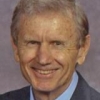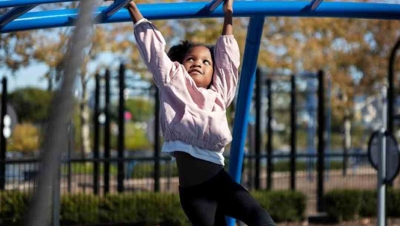Experts weigh in
Each year in the United States, the number of children with obesity problems grows. This condition doesn’t seem to improve and hasn’t for quite some time. There has been plenty of information published identifying the culprits of this epidemic. In this article, we will further discuss some of the culprits, as well as identify some possible solutions.
A discussion spanning a three-day period on this topic, moderated by Joe L. Frost, Parker Centennial Professor Emeritus of the University of Texas, was recently posted on newtalk.org. A field of 14 experts weighed in on the causes and possible solutions. These individuals are working to change the lack of physical activity and implement policies and programs that will help to cultivate a healthy culture. It would be impossible to share all here due to space allocations. It is well-expressed by all participants, including the summary. With that in mind, excerpts from this discussion are shared here.
Dr. Frost opened the discussion with the following statement posing important questions.
Joe L. Frost:
Welcome to this NewTalk forum examining the obesity epidemic and the urgent need to encourage a culture of fitness nationwide for children and adults. The obesity crisis is real—The U.S. Centers for Disease Control and Prevention say that, as of 2008, fully a quarter of American adults are clinically obese. One-third of American children are overweight and 70% of these will become overweight adults.
As we know, overweight vs. obesity is based on “body mass index” (BMI). An adult 5’ 9”, weighing 169-202 pounds is considered overweight, while 203 or more is considered obese. BMI is one indicator of potential health risks.
While obesity is a complex issue with many causes, our discussion will focus on the role of physical activity in combating this crisis. It’s clear that our sedentary lifestyles are a critical factor contributing to the rise of obesity. How can we encourage fitness for everyone? And how will our population’s health further decline if we do not?
Let’s start at the beginning. How did our society become so sedentary? Some of the culprits are obvious: TV, video games, the Internet, suburban life, dwindling green space, an ultra-safety-conscious culture, and high-stakes testing in schools. But if we are to reverse these unhealthy patterns, we should better understand their origins.
Were we more fit 50 years ago? How about 100?
Here is a summary of information offered by the participants. Again, participants went into great detail with their responses, and you are invited to view the full discussion and comment in the appropriate section.
“News reports, medical studies, and daily observations have been telling us for years that America is facing an obesity crisis, particularly among our children. They are eating more and moving less. That sedentary lifestyle and fitness, particularly among kids, was the focus of the first of a two-part discussion of what has been called an epidemic. Moderator Joe Frost cited the historical aspect of obesity in America, noting that 50-100 years ago, we were a much more fit population. The panel had a long list of culprits: technology (from computers to push-button appliances); cars; traffic; a reduction in recess and organized sports; the lack of places to walk, ride, or just play; and fear of risk and of litigation. The open-air, unstructured play of their own childhoods seems lost on today’s young generation.
Pointing the way to change were numerous programs and individual efforts from around the country. A school in Austin swapping a schoolyard slab for a green outdoor habitat. Families banding together for nature adventures. New York City’s swim programs for elementary school students. Imaginative playgrounds are being built, often by the community itself. Developers incorporating open green spaces in new sub-divisions.
The turn-around in the public view toward smoking in recent decades served as a model for a true shift of society’s attitudes toward obesity and physical activity. All agreed that the key to turning fitness into a popular choice, not a chore, can come from a collaboration of all sectors of society. Government, business, schools, the media, and communities all must play a role.”
Closing Statement by Joe L. Frost:
“This has been one of the most high-energy, instructive professional discussions of my career. Thank you all for your courtesy, expertise, and abandon in standing up for kids’ (and adults’) health and fitness. Free play, wild places, traditional games and sports, and productive work helped keep kids physically fit and developmentally able for centuries. Now, in this historically unique out-of-control, regulatory cyber-world, we collaborate to help bring common sense back to the culture of childhood and counter the obesity and fitness epidemic. At what point would this epidemic become a pandemic? As you know, the medical profession is pointing to a growing incidence of rickets among children stemming from lack of sunlight and Vitamin D. Now, parents may feel the need to choose between rickets from too little sunlight or cancer from too much. What advice can our medical professionals offer?”
“One final shot at the culprits that are diminishing play, development, and fitness: When a Florida school posted a sign, NO RUNNING ON THE PLAYGROUND, those of us already concerned had to know that we were approaching a critical juncture–fix it or lose it. Lawsuits in Florida and elsewhere have taken a toll on schools, parks, and other play venues. They are a two-headed beast, leading to the removal of deadly devices from playgrounds and, on the other hand, tying up personnel, funds, and time on issues best handled by parents and school and park personnel. A state university system was sued because a child fell over a stump in a forest adjacent to a school playground. Our sponsor, Common Good, is targeting such legal maladies. Yet another culprit may be high-stakes testing programs like the No Child Left Behind Act which have taken priority over physical activity, the arts, etc., in so many schools.
Future NewTalk will address NCLB and whether the law should be rewritten. This is an opportunity for all of us to weigh in with politicians.”
Source: Newtalk.org








